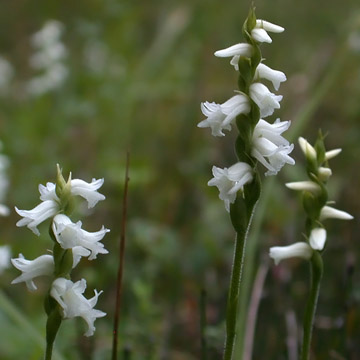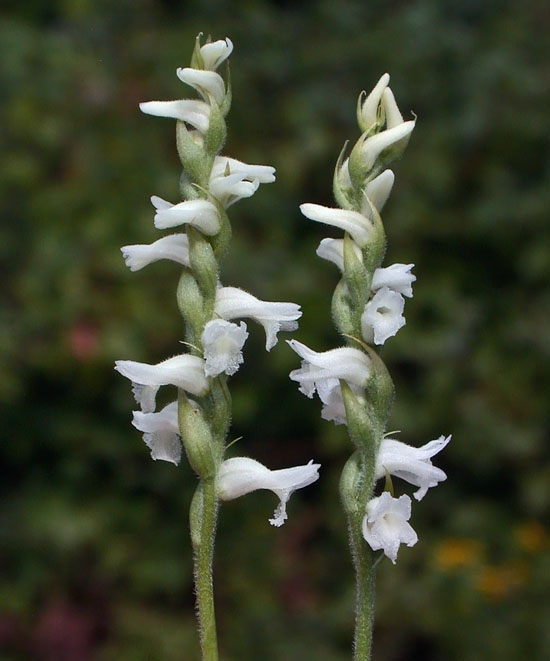

Spiranthes arcisepala - (image 1 of 6)
Taxonomy
Family: Orchidaceae
Habitat
Fens, bogs, seeps, wet roadsides, occasionally in somewhat drier habitats.
Associates
Distribution
Nova Scotia and Prince Edward Island, east-southeast Ontario and Quebec, south through ME, NH, VT, MA, CT, NY, NJ, PA, northern OH, southern MI, and northern IN, south from PA through the mid- and northern Blue Ridge and Northern Highlands.
Morphology
Perennial to 46 cm. Leaves remaining until anthesis and withering shortly after; flowers 5 mm or longer, campanulate, gaping, slightly to moderately nodding and becoming more open with age, white; lateral sepals flattened, lanceolate, acute or obtuse, straight to strongly downwardly falcate, the tips often surpassing the lower labellum margin in profile; labellum abaxially white or very pale yellow, centrally glabrous and white to pale yellow back in the throat, margins crisped and lacerate below the point of curvature, basally dilated, obtuse at the apex, abaxial glands usually well-developed and spherical; basal callosities to 1.3 mm, often directed inward; seeds polyembryonic; 2n=45, 60.
Notes
Flowers early September to early October, rarely earlier
Wetland indicator: NA
Not described until 2017, this species is part of the Spiranthes cernua complex. It is a cryptic species related to S. ochroleuca, S. casei, and S. sheviakii. Perhaps best distinguished for the white and obtuse, relatively short lip and downwardly falcate lateral sepals.
Recent genetic testing has found that several plants that were originally determined to be S. cernua or S. incurva are actually this species, suggesting that it is even more cryptic in nature than originally thought. This also suggests that the shape of the lateral sepals is not a completely reliable trait and the presence of basally inflated flowers with a relatively short lip that is rounded or acute at the apex should be given greater weight in identification. Many of the morphologically ambiguous plants were found within populations of typical S. arcisepala, though a few were not.

Example of plant (left) with straight lateral sepals that was genetically determined to be S. arcisepala.
More work needs to be done to determine if hybridization or ploidy level could play a role in this variation.
References
M. Hough and M.A. Young. 2021. A systematic survey of the Spiranthes cernua species complex (Orchidaceae) in New York. Native Orchid Conference Journal, 18(3): 22-56.
Pace, M.C. and Cameron, K.M. The systematics of the Spiranthes cernua species complex (Orchidaceae): Untangling the Gordian Knot. Systematic Botany, 42(4):1-30.
Sheviak, C.J. 1982. Biosystematic study of the Spiranthes cernua complex. New York State Museum Bulletin No. 448.
|
Michael Hough © 2017 |